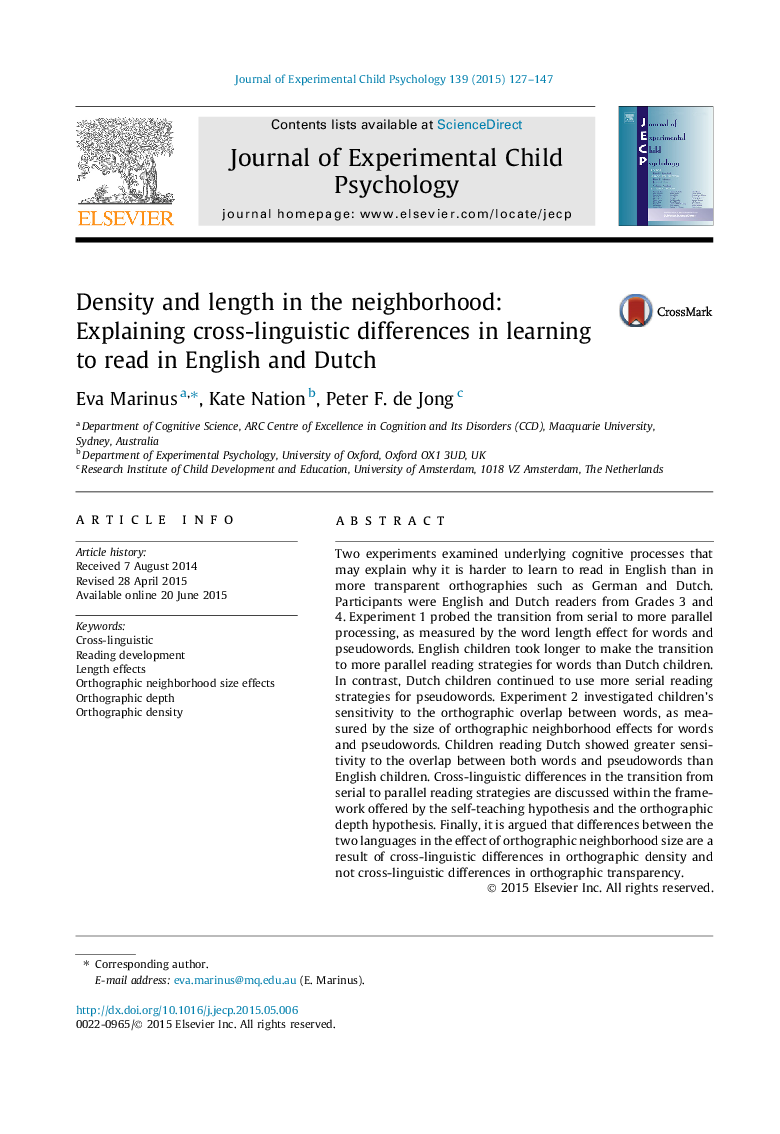| کد مقاله | کد نشریه | سال انتشار | مقاله انگلیسی | نسخه تمام متن |
|---|---|---|---|---|
| 917953 | 1473473 | 2015 | 21 صفحه PDF | دانلود رایگان |
• We investigate the influence of orthographic depth and density on learning to read.
• The transition to parallel word reading occurs slower in English than in Dutch.
• Suggesting that orthographic depth directly impacts learning to read.
• In addition, Dutch children show larger sensitivity to density than English children.
• Suggesting that orthographic density also affects ease of learning to read.
Two experiments examined underlying cognitive processes that may explain why it is harder to learn to read in English than in more transparent orthographies such as German and Dutch. Participants were English and Dutch readers from Grades 3 and 4. Experiment 1 probed the transition from serial to more parallel processing, as measured by the word length effect for words and pseudowords. English children took longer to make the transition to more parallel reading strategies for words than Dutch children. In contrast, Dutch children continued to use more serial reading strategies for pseudowords. Experiment 2 investigated children’s sensitivity to the orthographic overlap between words, as measured by the size of orthographic neighborhood effects for words and pseudowords. Children reading Dutch showed greater sensitivity to the overlap between both words and pseudowords than English children. Cross-linguistic differences in the transition from serial to parallel reading strategies are discussed within the framework offered by the self-teaching hypothesis and the orthographic depth hypothesis. Finally, it is argued that differences between the two languages in the effect of orthographic neighborhood size are a result of cross-linguistic differences in orthographic density and not cross-linguistic differences in orthographic transparency.
Journal: Journal of Experimental Child Psychology - Volume 139, November 2015, Pages 127–147
